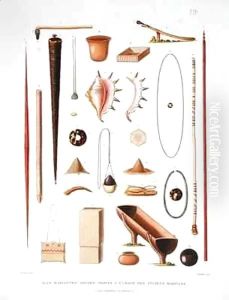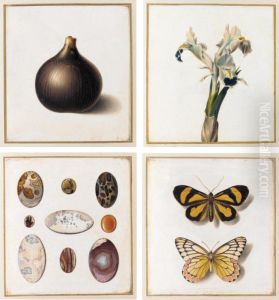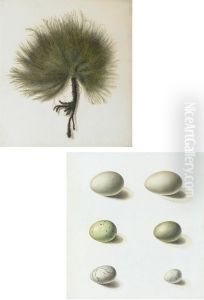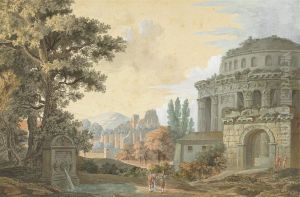Antoine Germain Bevalet Paintings
Antoine Germain Bevalet was a French artist born in 1779, whose work primarily spanned the late 18th and early 19th centuries, a period marked by significant political, social, and artistic upheaval in France and across Europe. Bevalet was an engraver and painter, known for his delicate and detailed botanical illustrations as well as for his contributions to the fields of landscape and portrait painting. His life and career were shaped by the backdrop of the French Revolution, the Napoleonic era, and the Restoration period, which influenced the themes and styles of many artists of his time.
Bevalet's artistic training and career trajectory were typical of artists in his era, involving apprenticeship with established masters and participation in the official art exhibitions of the time, such as the Paris Salon. However, detailed records of his early life and training are sparse, leaving much of his formative years to speculation. What is known is that his work caught the attention of both his contemporaries and patrons, allowing him a degree of professional success and recognition within the competitive Parisian art scene.
Throughout his career, Bevalet contributed to the popular practice of engraving, which was a crucial medium for the dissemination of images before the advent of photography. His engravings often featured plants and animals, rendered with meticulous attention to detail and accuracy, reflecting the Enlightenment's interest in science and nature. These works not only showcase his technical skill but also serve as valuable historical records of the period's scientific interests and explorations.
Despite his accomplishments, Antoine Germain Bevalet did not achieve the same level of lasting fame as some of his contemporaries. He passed away in 1850, leaving behind a body of work that, while perhaps not widely recognized today, remains an important part of the artistic and cultural landscape of early 19th-century France. His contributions to botanical illustration and the art of engraving continue to be appreciated by art historians and collectors for their beauty and historical value.






